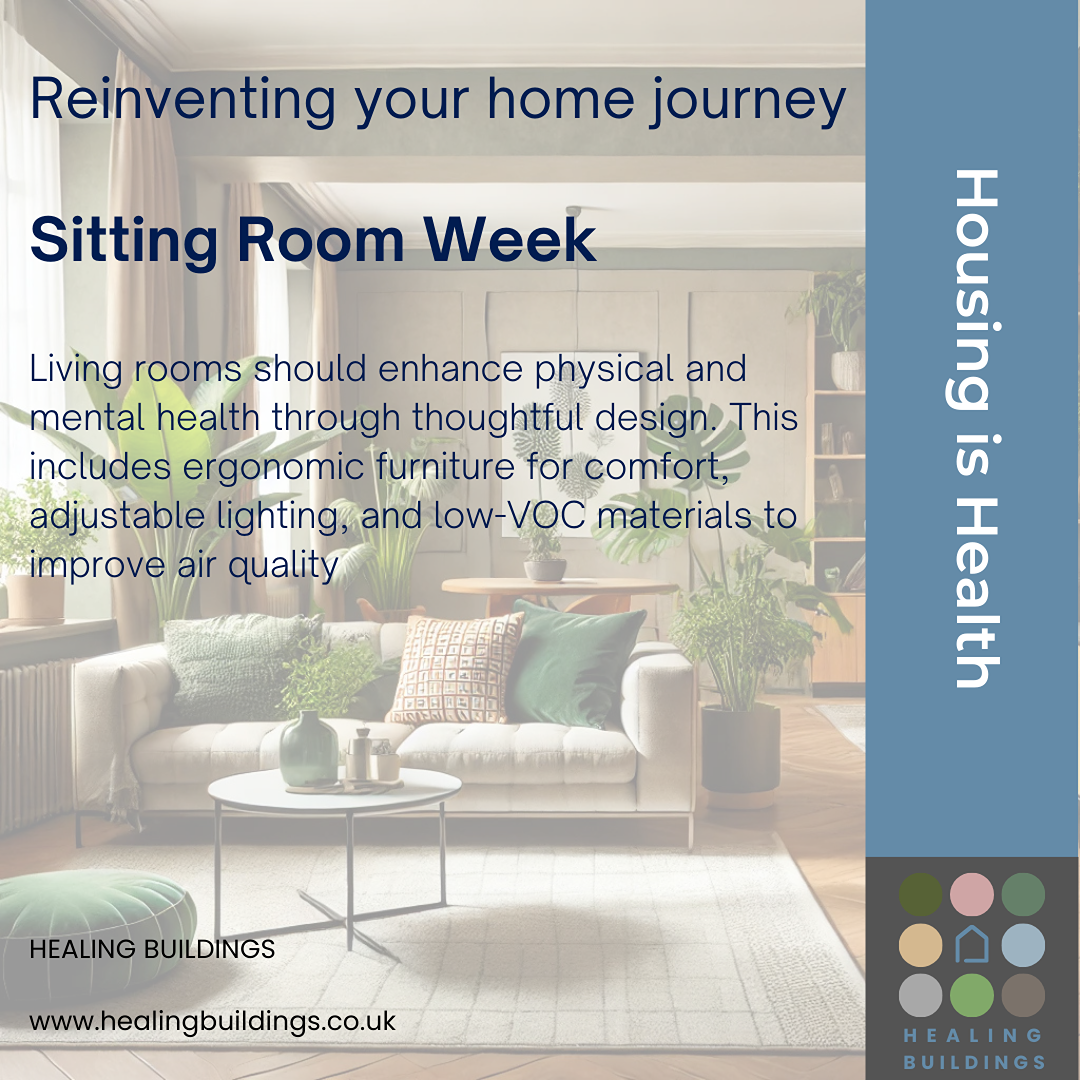Reinventing the Home - Housing is Health

The Living Room as a Wellness Space: Enhancing Your Environment for Health
Design Choices That Prioritise Physical and Mental Wellbeing
Introduction: The living room is more than just a space for gathering; it should actively contribute to the health and wellbeing of those who use it. Thoughtful design choices focusing on clean air, decluttering, mindful material selection, and noise management can create a living environment that supports both physical and mental health. This blog explores these four key wellness principles to help you transform your living room into a sanctuary that nurtures body and mind.
1. Clean Air Quality
Ensuring clean air is fundamental to a healthy living space. Pollutants such as dust, allergens, and volatile organic compounds (VOCs) can compromise indoor air quality and overall health. To tackle this, select low-VOC paints and furniture to reduce the release of harmful chemicals. Invest in air purifiers that filter out allergens and pollutants, and consider incorporating indoor plants that naturally improve air quality, such as peace lilies and snake plants.
Tip: Ensure that your living room has proper ventilation to facilitate air circulation and prevent the buildup of pollutants and moisture that could lead to mold growth.
2. Declutter and Clean Regularly
A clutter-free space is crucial for mental clarity and relaxation. Piles of items and disorganized furniture can create a sense of chaos, contributing to stress and anxiety. Establish functional storage solutions to maintain order and keep surfaces clear. Regular cleaning, including dusting and vacuuming, is essential to keep allergens at bay and maintain a fresh environment.
Tip: Declutter periodically and commit to a cleaning schedule that addresses dust-prone areas such as shelves, corners, and under furniture to sustain a healthier, more peaceful space.
3. Materials Matter
The materials you choose for your living room significantly impact its healthiness. Opt for hypoallergenic fabrics and natural, sustainably sourced materials like cotton, linen, and untreated wood. These choices reduce exposure to potentially harmful chemicals and promote a toxin-free environment. Organic textiles and breathable fabrics for upholstery and curtains enhance comfort while minimizing irritants.
Tip: Prioritize furniture made from certified non-toxic materials to support a cleaner, eco-friendly living space.
4. Keep Out the Noise
Noise pollution disrupts peace and can impact mental wellbeing. To create a serene environment, incorporate noise-reducing design elements. Sound-absorbing features such as thick rugs, upholstered furniture, heavy curtains, and even acoustic panels can help reduce unwanted noise. This quiet, controlled soundscape is conducive to relaxation and mental recovery.
Tip: Consider strategic furniture placement and adding plants with broad leaves, which can help absorb sound and contribute to a tranquil atmosphere.
Conclusion: Designing a living room with health and wellness in mind transforms it from a simple gathering space into a rejuvenating haven. By focusing on clean air, decluttering, choosing the right materials, and managing noise, you create an environment that supports relaxation, health, and happiness. Implementing these design principles ensures that your living room nurtures both the body and mind, creating a space where you can truly unwind and thrive.

Click on this text to start editing and enter your own text with some basic formatting. Just click anywhere outside the text box when you're done to continue working on the rest of your page. Elements like this text can often be hidden in the block settings.

